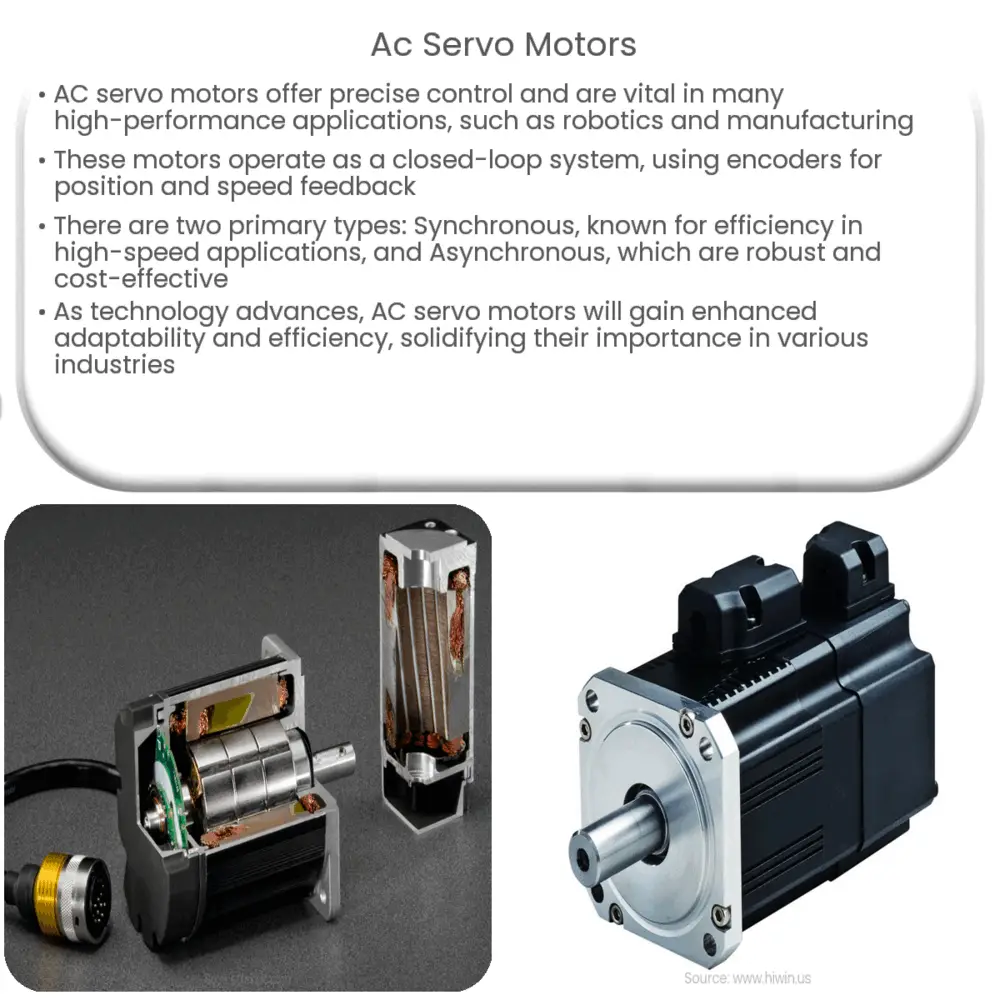Explore the fundamentals of AC servo motors, their types, components, applications, and their growing role in the tech-driven future.

Introduction to AC Servo Motors
AC servo motors are a type of electric motor that are primarily used in high-performance applications that require precision control. They are designed to follow a certain command for position, velocity, and torque, making them integral components in many industrial processes and robotics.
The Basics of AC Servo Motors
At its core, an AC servo motor is a rotary actuator that allows for precise control of angular position. The motor is paired with some type of encoder to provide position and speed feedback. This closed-loop system makes AC servo motors ideal for many applications where precise movement is required.
Types of AC Servo Motors
- Synchronous Servo Motors: Synchronous servo motors utilize permanent magnets in their rotor assembly. The rotor turns at the same speed as the magnetic field generated by the stator windings, hence the term ‘synchronous’. They are known for their efficiency and performance in high-speed applications.
- Asynchronous Servo Motors: Also known as induction servo motors, asynchronous servo motors use a squirrel cage rotor which does not need any permanent magnets. The rotor turns slower than the magnetic field of the stator, which creates slippage and induces the current that drives the motor. They are robust and cost-effective but lack the speed control accuracy of synchronous motors.
Components of an AC Servo Motor
- The Stator: This is the stationary part of the motor that includes windings which, when excited by an AC supply, produce a rotating magnetic field.
- The Rotor: The rotor is the moving part of the motor. In AC servo motors, the rotor can be of the squirrel-cage type or can have permanent magnets, depending on the type of AC servo motor.
- The Encoder: This device provides feedback to the control system, giving information about the motor’s position and speed.
AC servo motors have many benefits over other types of motors. They have a high power-to-weight ratio, a large torque-to-inertia ratio, and are capable of delivering a high peak torque. This, combined with their precision control capabilities, makes them suitable for a wide range of applications.
Applications of AC Servo Motors
AC servo motors have found their place in a wide array of applications due to their precise control and efficiency. Let’s discuss some notable examples.
- Robotics: In robotics, AC servo motors are used for their precision and control, as well as their ability to handle complex motion patterns. This can range from simple pick-and-place robots to complex humanoid robots.
- Manufacturing: Manufacturing machinery such as CNC machines, automated guided vehicles (AGVs), and packaging equipment often use AC servo motors for their precision and speed control.
- Aerospace: In aerospace, AC servo motors control the position of control surfaces like ailerons, elevators, and rudders.
The Future of AC Servo Motors
As technology continues to advance, so does the functionality of AC servo motors. With the ongoing development of the Internet of Things (IoT) and Industry 4.0, AC servo motors are becoming smarter, more efficient, and more adaptive. This, coupled with advancements in control algorithms and power electronics, means that AC servo motors will continue to play a pivotal role in many industries.
Conclusion
In conclusion, AC servo motors are an integral part of modern technology, providing precise control and power efficiency in a wide range of applications. Their versatility and adaptability to different environments, combined with their growing capabilities, make them an indispensable tool in robotics, manufacturing, and aerospace among other sectors. As technology continues to progress, we can expect the functionality and efficiency of AC servo motors to reach new heights, further enhancing their contribution to the rapidly evolving world of technology.

